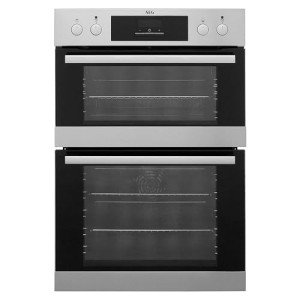The Rise of Built-In Ovens: A Seamless Approach to Modern Cooking
In modern kitchen areas, where style aesthetics mix flawlessly with performance, one device stands out as a real video game changer: the built-in oven. As property owners and chefs alike continue to look for ingenious services that improve their cooking experience, built-in ovens have become increasingly popular. This post checks out the benefits, factors to consider, and patterns surrounding built-in ovens, highlighting why they are an essential function in modern-day cooking spaces.
What is a Built-In Oven?
A built-in oven is a kitchen home appliance designed to be integrated into the kitchen cabinetry of a kitchen area instead of standing alone. Unlike standard freestanding ovens, which can be moved and placed anywhere, built-in ovens been available in different designs and sizes to fit specifically within designated spaces. Readily available in single or double setups, these ovens provide a structured look that matches contemporary kitchen area styles.
Advantages of Built-In Ovens
1. integrated ovens and hobs -Saving Design
One of the most attractive benefits of built-in ovens is their space-saving design. By integrating the oven into cabinets, you can release up important counter and floor space. This is especially advantageous in smaller kitchens, where optimizing room is essential. Built-in ovens can be installed at eye level, making them more accessible and decreasing the requirement to bend down.
2. Visual Appeal
Built-in ovens add to a sleek and cohesive cooking area design. Available in numerous finishes-- such as stainless steel, black, white, and custom cabinetry-- they can blend perfectly into the general decoration. This aesthetic appeal boosts the cooking area's visual consistency and raises the area, creating a contemporary and sophisticated environment.
3. Improved Functionality
Lots of built-in ovens come equipped with advanced cooking technologies, such as convection cooking, steam ovens, and clever functions. These improvements enable flexible cooking options, making it much easier to attain professional-level results in the house. Smart built-in ovens can even link to Wi-Fi, allowing users to manage the oven from another location, get notices, and gain access to a range of cooking programs and dishes.
4. Improved Ventilation
Since built-in ovens can be integrated with kitchen hoods and ventilation systems, they can help maintain better air quality and decrease cooking odors. This is specifically significant for those who like to cook with fragrant spices and ingredients, as an effective ventilation system can keep the cooking area comfortable and welcoming.
5. Personalization Options
Built-in ovens offer a wide range of customization options to match specific cooking styles and requirements. From professional-grade appliances with numerous cooking modes to compact styles for smaller cooking areas, property owners can choose the oven that fits their particular requirements. Lots of producers likewise provide personalized front panels, allowing you to match the oven's appearance to your cabinets for a genuinely merged appearance.
Factors to consider When Choosing a Built-In Oven
While built-in ovens have many benefits, there are important considerations to bear in mind before buying:
1. Rate
Built-in ovens generally feature a higher cost than their freestanding equivalents due to their design and setup requirements. It's important to factor in both the expense of the oven and any extra expenditures associated with kitchen cabinetry modifications or setup.

2. Setup Requirements
Installing a built-in oven frequently requires professional support, particularly if you require to modify existing cabinets. Ensure that you consider any costs related to installation, including labor and possible cabinetry changes.
3. Size and Dimensions
Before buying a built-in oven, measure the designated space precisely to make sure an appropriate fit. Built-in ovens can be found in numerous sizes and setups, so choosing one that aligns with your needs and kitchen area design is important.
4. Lifestyle and Usage
Consider your cooking habits and needs when choosing a built-in oven. If you regularly host large events, a double oven may be more helpful. On the other hand, if you have a compact cooking area, a single-wall oven may be enough.
Trends in Built-In Ovens
The cooking area home appliance market is constantly developing, and built-in ovens are not exempt from emerging trends. Some existing patterns consist of:
Smart Technology Integration: With the rise of smart home innovation, built-in ovens now often include connectivity choices. This enables users to keep an eye on cooking development and change settings by means of mobile apps.
Energy Efficiency: As sustainability becomes a concern, numerous producers are purchasing energy-efficient built-in ovens that reduce energy intake while maintaining performance.
Multi-functional Designs: Built-in ovens now use functions such as air frying, slow cooking, and steaming, providing adaptability that meets a wide range of cooking methods.
Conclusion
Built-in ovens unquestionably represent a best blend of design, function, and convenience in today's cooking areas. As more house owners select this modern-day option, the focus moves to producing a cooking area that is as visually pleasing as it is useful. Whether you are developing a new home or redesigning your cooking area, considering a built-in oven could elevate your culinary experience and change your cooking area into a trendy and practical sanctuary. With a variety of choices offered and ongoing developments in technology, built-in ovens stay a standout choice for both beginner cooks and culinary lovers alike.
